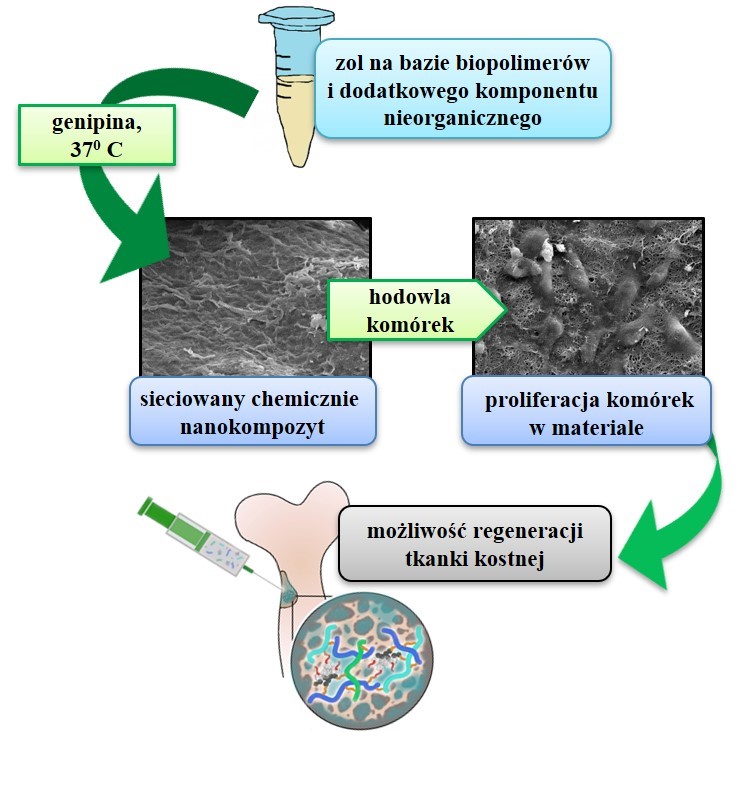Interdisciplinary Environmental Doctoral Studies "Physical, Chemical and Biophysical Foundations of Modern Technologies and Materials Engineering" (FCB) – PhD Adriana Gilarska

 Project title
Project title
Interdisciplinary Environmental Doctoral Studies "Physical, Chemical and Biophysical Foundations of Modern Technologies and Materials Engineering" (FCB) – PhD Adriana Gilarska
 Name of Beneficiary/Beneficiaries
Name of Beneficiary/Beneficiaries
Faculty of Physics and Applied Computer Science, AGH University of Science and Technology, Kraków
 Name of programme
Name of programme
Operational Program Knowledge Education Development
 Competition
Competition
Interdisciplinary Environmental Doctoral Studies "Physical, Chemical and Biophysical Foundations of Modern Technologies and Materials Engineering" (FCB)
 Project value
Project value
PLN 10,123,883.00 for 75 beneficiaries
 Funding value
Funding value
PLN 134,895.00 per doctoral student
 Project delivery period
Project delivery period
from September 1, 2017 to August 31, 2022 (extended to October 31, 2023)
Get to know our team
PhD. Adriana Gilarska
prof. D.Sc. Maria Nowakowska
prof. D.Sc Czesław Kapusta
DSc. Joanna Lewandowska-Łańcucka, prof. UJ
PhD. Eng. Sylwia Fiejdasz
See the effect of our work
As part of the interdisciplinary doctoral thesis, nanocomposites were obtained and characterized, potentially useful as cell scaffolds for tissue engineering, in particular for the regeneration of bone tissue. Two main concepts are presented:
(1) a nanocomposite based on a hydrogel matrix with dispersed silica particles for injectable applications, which has been enriched with an anti-osteoporotic drug (sodium alendronate) and (2) a magnetic nanocomposite based on a hydrogel matrix with dispersed magnetic nanoparticles for applications in the form of a ready-made cross-linked structure.
The research results were published in international journals (with Ministry of National Education score 100-200) and presented at numerous international and national conferences. The inventions are protected by a national patent and national and international patent applications.
The scientific achievements created as part of this project were the basis for awarding Dr. Adriana Gilarska the START scholarship of the Foundation for Polish Science for the best young scientists with significant successes in their field of science (2023 edition). During her doctoral studies, Dr. Gilarska received a scholarship under the ETIUDA 8 grant financed by the National Science Center, and also completed research internships in foreign research centers - The Center for Translational Bone, Joint and Soft Tissue Research, TU Dresden (Germany) and the Institute of Nanoscience of Aragon, University of Zaragoza (Spain).
The most important publications:
1. Gilarska, A., Hinz, A., Bzowska, M., Dyduch, G., Kamiński, K., Nowakowska, M., Lewandowska-Łańcucka, J. (2021). Addressing the Osteoporosis Problem—Multifunctional Injectable Hybrid Materials for Controlling Local Bone Tissue Remodeling. ACS Applied Materials & Interfaces, 13(42), 49762-49779.
2. Fiejdasz, S., Gilarska, A., Horak, W., Radziszewska, A., Strączek, T., Szuwarzyński, M., Nowakowska, M., Kapusta, C. (2021). Structurally stable hybrid magnetic materials based on natural polymers–preparation and characterization. Journal of Materials Research and Technology, 15, 3149-3160.
3. Fiejdasz, S., Gilarska, A., Strączek, T., Nowakowska, M., Kapusta, C. (2021). Magnetic Properties of Collagen–Chitosan Hybrid Materials with Immobilized Superparamagnetic Iron Oxide Nanoparticles (SPIONs). Materials, 14(24), 7652.
4. Gilarska, A., Lewandowska-Łańcucka, J., Guzdek-Zając, K., Karewicz, A., Horak, W., Lach, R., Wójcik, K., Nowakowska, M. (2020). Bioactive yet antimicrobial structurally stable collagen/chitosan/lysine functionalized hyaluronic acid–based injectable hydrogels for potential bone tissue engineering applications. International journal of biological macromolecules, 155, 938-950.
5. Lewandowska-Łańcucka, J., Gilarska, A., Buła, A., Horak, W., Łatkiewicz, A., Nowakowska, M. (2019). Genipin crosslinked bioactive collagen/chitosan/hyaluronic acid injectable hydrogels structurally amended via covalent attachment of surface-modified silica particles. International journal of biological macromolecules, 136, 1196-1208.

What problem does our project solve?
The aim of the project was to obtain and characterize bioactive nanocomposites, potentially useful as cell culture scaffolds for tissue engineering, in particular for the regeneration of bone tissue. The growing demand for filling bone defects resulting from the progressive aging process, chronic diseases or accidents means that the subject of the conducted research fits well into the current trend of looking for an alternative to traditional transplants, which are associated with many limitations. These limitations can be eliminated thanks to the progressive development of bone tissue engineering and research on the preparation of cell scaffolds. The nanocomposites developed as part of the doctoral thesis consisted of a hydrogel matrix obtained from polymers of natural origin, in which selected inorganic components were dispersed, creating structurally stable materials with the desired properties, depending on the composition and positively influencing the efficiency of bone tissue regeneration. The project developed methods leading to the covalent binding of inorganic components (silica particles and magnetic nanoparticles) to the hydrogel matrix, which eliminates the serious problem of phase separation and uncontrolled diffusion of inorganic components into tissues under in vivo conditions in the absence of their immobilization in the matrix. . At the same time, the desired properties of the components placed in the hydrogels were preserved. Moreover, a new nanocomposite enriched with an anti-osteoporotic drug carrier (alendronate sodium) was developed, enabling the reconstruction of bone tissue while having a high therapeutic potential in the case of osteoporotic lesions. This solution ensures non-invasive localization of the scaffold at the implantation site, maintaining its structure, biological properties and limiting potential adverse side effects of therapy.
Who will benefit from the project results?
Increasing life expectancy and an aging population contribute to the rapid increase in disorders and diseases of the musculoskeletal system, which is a huge challenge for health care and modern orthopedics. Bone tissue is the second most frequently transplanted tissue in the world after blood. The nanocomposites developed within the project may potentially be used in regenerative medicine as cellular scaffolds for filling small bone defects. Moreover, the use of nanocomposites containing an anti-osteoporotic drug carrier may be an attractive method of treating defects caused by osteoporosis.